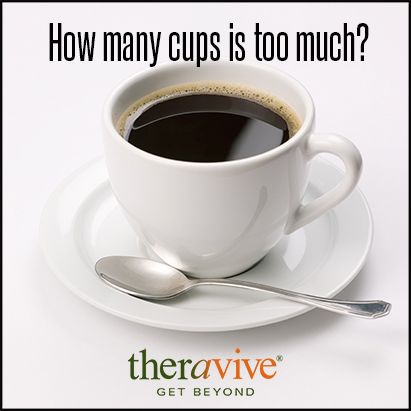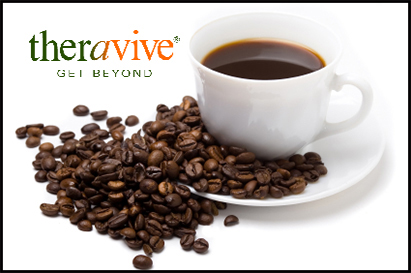 Caffeine (1,3,7,-trimethylxanthine) is a naturally occurring mild stimulant found in coffee beans and kola nuts. Along with it's close chemical cousins theophyline, (from tea leaves) Lowry, n.d.) and theobromine, (from cocoa beans) (n.a., 2002), it is the most widely used psychoactive substance in the world.
Caffeine (1,3,7,-trimethylxanthine) is a naturally occurring mild stimulant found in coffee beans and kola nuts. Along with it's close chemical cousins theophyline, (from tea leaves) Lowry, n.d.) and theobromine, (from cocoa beans) (n.a., 2002), it is the most widely used psychoactive substance in the world.
Currently, rates of caffeine consumption in the United States are stable- the FDA indicates that as of 2012, the rates of consumption have not increased; however, the source of consumption – e.g.- energy drinks- has (Food and Drug Administration, 2012). This is contradictory with the casual observation of the the popularity of caffeinated energy drinks, such as Red Bull and Monster, and increasingly large serving sizes of coffee. Many of these drinks also contain large amounts of sugar, the amino acid taurine, and B- vitamins (Consumer Reports, 2012; Brown University, n.d.). The science behind the efficacy of increased energy from B vitamin consumption or use of taurine is weak, inconsistent, or taken out of context. B vitamins do facilitate energy availability from food, but a normal diet should provide all the B vitamins needed, without additional supplementation. Taurine supplementation may or may not improve cognitive or physical performance; finding are unclear (Zeratsky, 2014). Sugar will provide a short term increase in energy, followed by an abrupt reduction in energy once it is depleted from the muscles and liver. However, effective marketing and a lack of knowledge about nutrition and other biological sciences as led to a popularity in energy drinks, though there are preferable sources of sustenance. A much better source of energy for athletes and physical laborers are complex carbohydrates.
Effects of Caffeine:
When caffeine is taken orally, it reaches peak plasma levels in about 30 minutes, causing central nervous stimulation, relaxing smooth muscle (particularly bronchial muscle), increasing gastric secretions, and stimulating cardiac muscle. Caffeine also produces stronger contractions in skeletal muscle and an overall increase in basal metabolic rate of about 10% in regular users. Caffeine is metabolized in the liver and has a plasma half-life of between three and six hours (Benowitz, 1990).
Benefits of Caffeine
Caffeine can improve alertness, concentration, and focus. t can also enhance athletic performance by increasing the strength of muscle contractions,and delaying fatigue. The primary sources of caffeine, and it's close chemical relatives- coffee, tea, and chocolate- are also rich sources of antioxidants, which have independent health benefits. Regular users of caffeine have an increased basal metabolic rate (Benowitz, 1990), which can contribute to weight management.
Problems with over use of Caffeine
Caffeine is a weak stimulant with a moderate duration of action, and when consumed in moderation, there is negligible to minimal potential for abuse or dependence. It does not stimulate the reward/pleasure center of the brain in most individuals intensely enough to produce psychological dependence. It will only produce physiological dependence when consumed in large quantities for a prolonged period of time, and will not produce desperate drug seeking behaviors resulting in abandonment of moral standards. Use of caffeine will not cause life to become unmanageable or produce aversive consequences with continued use.
The problem with caffeine is when it is consumed in excessive quantities. A 24 oz iced coffee, a liter of iced tea, and three 12 oz energy drinks will equal approximately 750 to 950 mg of caffeine.
Abrupt cessation of caffeine use can induce a withdrawal syndrome. The symptoms are: headache, decreased arousal, and fatigue. Caffeine withdrawal symptoms, specifically the headache, can become severe enough to be incapacitating in some individuals (Griffiths, & Woodson, 1988).
The physical dependency mechanism appears to be related to caffeine's action as a competitive antagonist for adenosine, an endogenous neuromodulator. Adenosine acts in the presynaptic area to inhibit the release of acetylcholine, norepinephrine, dopamine, gamma amino butyric acid and serotonin. Persistent use of caffeine has been shown to increase the number of adenosine receptors in the brain as a compensatory mechanism. It has also been proposed that the increased number of adenosine receptors are involved in the headache and fatigue of caffeine withdrawal. Beta-adrenergic receptors have been shown to decrease in numbers during repeated caffeine use, while Beta-adrenergic receptor sensitivity decreased during caffeine withdrawal. This can cause vasoconstriction in the scalp, and the resultant headache (Benowitz, 1990; Griffiths, & Woodson, 1988).
Caffeine intoxication and Caffeine Withdrawal are both are diagnoses currently included in the DSM 5 (Diagnostic and Statistical Manual of Mental Disorders, 5th edition). Caffeine intoxication symptoms include restlessness, nervousness, excitement, increased urinary output. At doses in excess of 1 g a day, muscle twitching, rambling flow of thought and speech, tinnitus, and periods of inexhaustibility occurs. Doses of caffeine in excess of 10 g a day can induce grand mal seizures and respiratory failure (Lopez-Ortiz, & Owen, 2000). This potentially fatal dose could be obtained from:
-
100 8 oz cups of brewed coffee
-
500 lbs of Dark chocolate
-
200 8 oz cups of black tea.
-
125 8.4 oz cans of Red Bull
(Center for Science in the Public Interest, 2014; Mayo Clinic, 2014)
 Concerns regarding Caffeine use in specific populations:
Concerns regarding Caffeine use in specific populations:
Individuals with Heart Disease
Caffeine can modestly increase blood pressure. With continued use, tolerance will develop, and after about a week of regular caffeine intake, it will have only a minimal impact on blood pressure (Van dam, 2014). Individuals with uncontrolled blood pressure should not consume caffeine until their hypertension (high blood pressure) is managed properly. High doses of caffeine can also increase heart rate, and in some individuals lead to an irregular heart rhythm (Mitchell, Slettenaar, Meer, Transler, Jans, Quadt, & Berry, 2011; Seconds Count, n.d.). The clinical significance of this will vary, as not all palpitations are dangerous- some are a premature or extra contraction of the heart, while arrhythmias are a potentially dangerous incoordination of the heart's rhythm which can result in cardiac arrest.
Pregnant or lactating women
Caffeine is not recommended for pregnant women, as caffeine does increase blood pressure, and a pregnant mom may already be experiencing gestational hypertension. Caffeine also crosses the placental barrier, and can cause the typical physiological arousal associated with caffeine in the baby (American Pregnancy Association, 2014). Caffeine is also transferred to baby through breastfeeding, and is not advisable (Drugs.com., 2014).
Psychiatric Populations
Individuals with chronic and severe mental illness can be especially prone to problems resulting from over-use of caffeine:
-
Caffeine intoxication will produce symptoms of anxiety, which will be more pronounced in individuals with anxiety disorders.
-
Caffeine intoxication can be misdiagnosed as panic disorder, and induce panic attacks in susceptible individuals.
-
Caffeine may interfere with the actions of a number of psychiatric medications:
-
Caffeine competes for space with benzodiazepines on GABA receptors, reducing their effectiveness, which can result in prescription of a higher dose, and increased risk of benzodiazepine dependence.
-
Caffeine may also interfere with the effectiveness of Lithium Carbonate by increasing Lithium excretion and lowering serum Lithium levels through increased urinary output.
-
Caffeine can either interfere with or enhance SL ( Sub-lingual) diffusion of medication through vasoconstriction or vasodilation. Whether caffeine is a vasodilator or vasoconstrictor remains a matter of debate in the literature. There is conflicting evidence.
Concerns for addicts
Persons with a history of chemical dependency may overindulge in caffeinated beverages for several reasons. Addicts in early recovery may have a tenuous grip on sobriety, and remain conflicted about their commitment to stay free of psychoactive drugs. Caffeine is a socially acceptable, legal alternative to illicit drugs of abuse. In large quantities, it will induce euphoria and energy, and generally alter one's consciousness in a manner familiar to addicts. I have personally observed a sample of about 2,500 persons diagnosed with various types of chemical dependency, with many of them increasing their use of caffeine, as well as nicotine, and sugary, fatty foods in early recovery, in an effort to continue force feeding the pleasure center of their brain. There is evidence that overuse of caffeine will stimulate the nucleus accumbens- the brains pleasure/reward center- sufficiently to keep a chemically dependent person hungry for their drug of choice.
Conclusion
Much of the information about energy drinks is exaggerated by both users and the manufacturer in terms of their energizing and stimulating properties. Red bull, one of the leading brands, contains only 80 mg of caffeine- less than an eight oz serving of brewed coffee. Some websites also list effects without consideration of the clinical significance. An elevated heart rate, or palpitations are not necessarily clinically significant, at least in young healthy persons. Caffeine is a mild, largely benign psychoactive drug, present in the most popular beverages throughout the world- coffee and tea, the ubiquitous energy drinks, and the most popular confection in the world- chocolate. When consumed moderately, it can enhance both physical and cognitive performance. However, when consumed in excessive amounts, or in certain high risk populations, it can lead to significant health or medical risks.
_______________________________________________________________________________________________________________________________
American Pregnancy Association. (2014). Caffeine during pregnancy. American Pregnancy Association.Retrieved August 14, 2014,from http://americanpregnancy.org/pregnancyhealth/caffeine.html
American Psychiatric Association. (2013). Diagnostic and Statistical Manual of Mental Disorders.
(5th Edition). Washington, DC.
Benowitz, Neal L. (1990). Clinical Pharmacology of Caffeine. Annual Review of Medicine. Vol 41. p.277-288
Brown University. (n.d.). Energy Drinks. Brown University Health Education. Retrieved August 14, 2014, from: http://www.brown.edu/Student_Services/Health_Services/Health_Education/alcohol,_tobacco,_&_other_drugs/energy_drinks.php
Center for Science in the Public Interest. (2014). Caffeine Content of Food and Drugs. Center for Science in the Public Interest. Retrieved August 14, 2014, from:http://www.cspinet.org/new/cafchart.htm
Consumer Reports. (2012). The Buzz on Energy drink caffeine. Consumer Reports.org. Retrieved August 14, 2014, from: http://www.consumerreports.org/cro/magazine/2012/12/the-buzz-on-energy-drink-caffeine/index.htm
Drugs.com. (2014). Caffeine use while Breastfeeding. Drugs.com. Retrieved August 14, 2014, from: http://www.drugs.com/breastfeeding/caffeine.html
Food and Drug Administration. (2012). FDA comments on Subcontract Number: 70000073494, Somogyi 2010, “Caffeine Intake by the U.S. Population”. Retrieved August 14, 2014, from: http://www.fda.gov/downloads/AboutFDA/CentersOffices/OfficeofFoods/CFSAN/CFSANFOIAElectronicReadingRoom/UCM333191.pdf
Griffiths, Roland R., and Woodson, Phillip P. (1988) Caffeine dependency and withdrawal
Physical Dependance: a review of human and laboratory animal studies. Psychopharmacology. 94. 437-451
Lopez-Ortiz, A, and Owen, D. ( 2000). Caffeine FAQ. Retrieved August 14, 2014, from: http://coffeefaq.com/site/caffeine-faq
Lowry, N. (n.d.). Tea and Theophyline. Retrieved August 14, 2014, from: http://helios.hampshire.edu/~nlNS/mompdfs/TeaTheoph.pdf
Mayo Clinic. (2014). Caffeine content for coffee, tea, soda and more. Mayo Clinic.
Retrieved August 14, 2014, from: http://www.mayoclinic.org/healthy-living/nutrition-and-healthy-eating/in-depth/caffeine/art-20049372
Mitchell, E.S., Slettenaar, M., Meer, N., Transler, C., Jans, L., Quadt, F., Berry, M., ( 2011). Differential contributions of theobromine and caffeine on mood, psychomotor performance and blood pressure. Physiology & Behavior 104 (2011) 816 – 822 doi: 10.1016/j.physbeh.2011.07.027
n.a. (2002). Xocoatl: Cocoa Theobroma. Retrieved May 26, 2014, from: http://www.xocoatl.org/index.htm#SEL
Seconds Count. (n.d.). Energy Drinks & the Heart: Know the Risks. Seconds Count. Retrieved August 14, 2014, from: http://www.scai.org/SecondsCount/Disease/detail.aspx?cid=135410fb-a293-43e0-82c6-ec0bcc47125f
Van dam, R. (2014). Ask the Expert: Coffee and Health. Harvard School of Public Health. Retrieved August 14, 2014, from: http://www.hsph.harvard.edu/nutritionsource/coffee/
Zeratsky, K. (2014). Taurine is listed as an ingredient in many energy drinks. What is taurine? Is it safe? Mayo Clinic. Retrieved August 14, 2014, from: http://www.mayoclinic.org/healthy-living/nutrition-and-healthy-eating/expert-answers/taurine/faq-20058177
About the Author
